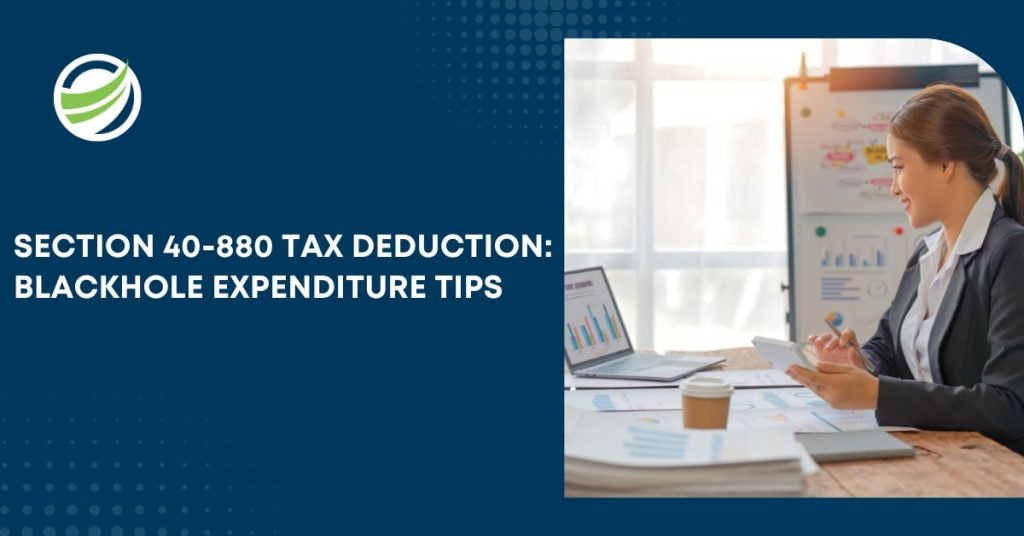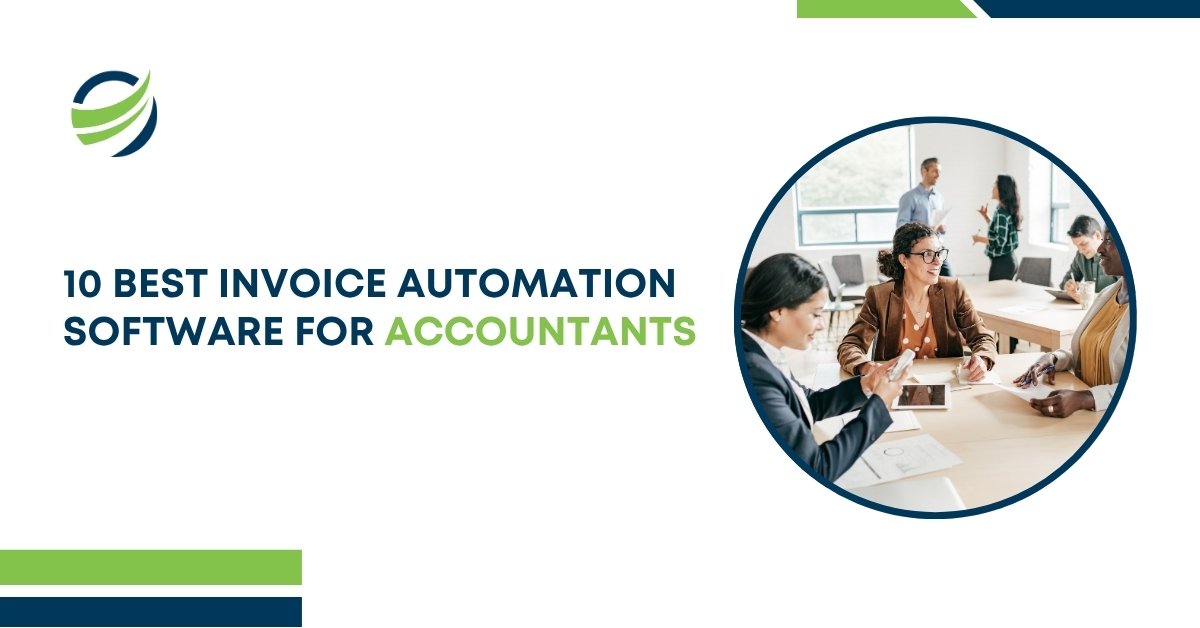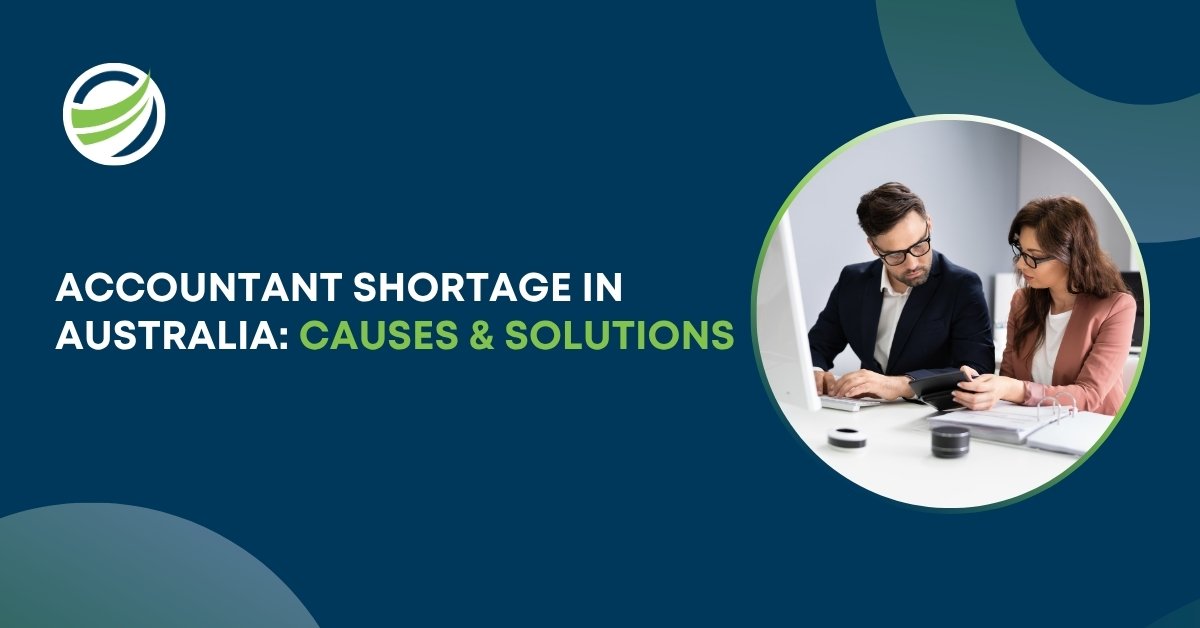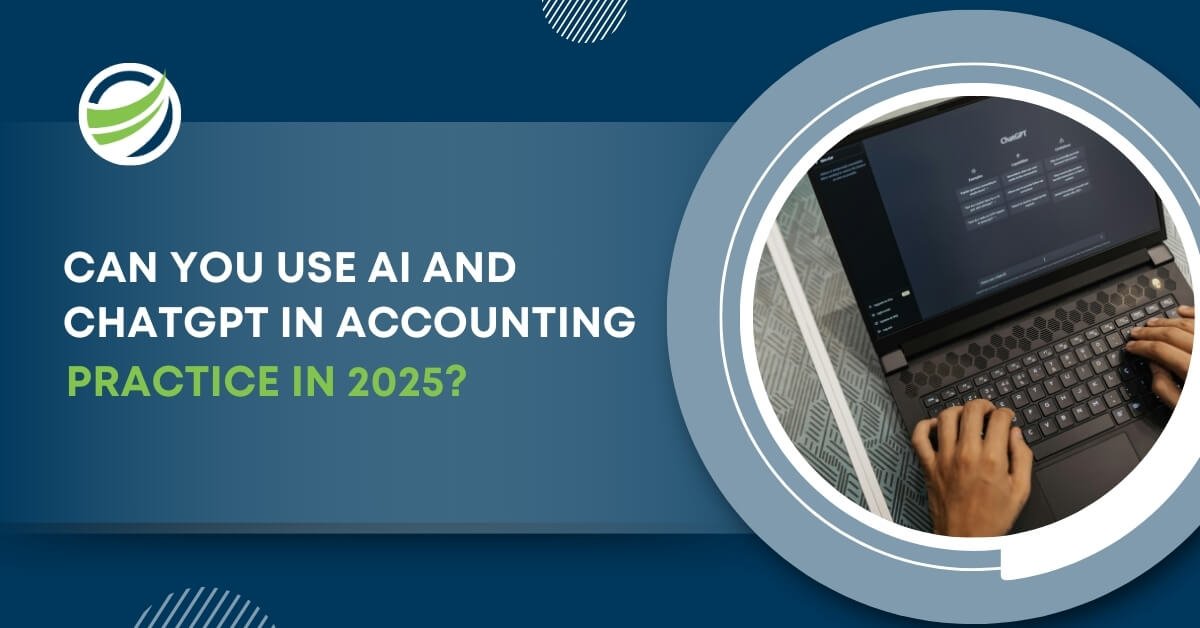Blackhole Expenditure & Section 40-880 Deductions Explained
Starting or shutting down a business often comes with hidden costs, expenses that don’t quite fit into standard deduction categories. These are commonly known as blackhole expenditure, and if you’ve ever wondered whether you can claim them, you’re not alone.
Thankfully, Australia’s tax legislation offers a solution: the Section 40-880 tax deduction.
In this blog, we’ll break down what these expenses are, how they work, and the Australian Taxation Office (ATO) rules surrounding them. If you’re a small business owner, entrepreneur, or advisor, this guide will help you understand what qualifies as blackhole expenditure ATO and how to make the most of your deductions.
According to the Australian Bureau of Statistics, new business registrations rose by 7% in the 2023–24 financial year, meaning more entrepreneurs than ever may be incurring blackhole expenditure without realising they can claim it under the Section 40-880 tax deduction.
What is Blackhole Expenditure?
Blackhole expenditure refers to certain business-related costs that are capital in nature and not deductible under any specific provision of the Income Tax Assessment Act. These are expenses incurred:
- While setting up a new business
- When restructuring or winding down an existing one
- In preparation for a business that ultimately never starts
They are often overlooked because they fall outside the usual categories of deductions.
Think of these costs as the grey zone of tax deductions: too much capital to be written off immediately, but not tied to any tangible asset that allows for depreciation. Without Section
40-880, they would be left unclaimed, hence the term “blackhole.”
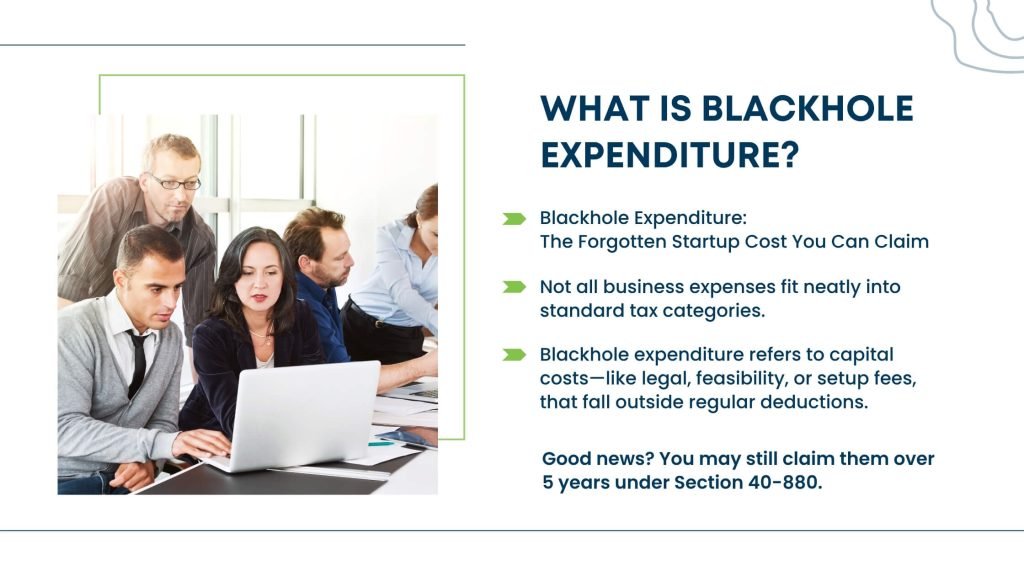
Common Blackhole Expenses for Business Startup Costs
Let’s say you’re launching a tech startup. You might engage lawyers to draft partnership agreements, consultants for market research, or designers for branding.
If your business hasn’t officially started, many of these expenses aren’t immediately deductible. However, under Section 40-880 tax deduction, they may be spread over five years.
If you’re using outsourced accounting services, make sure they’re aware of your business intentions and timing, as it impacts which expenses qualify as blackhole expenditure under Section 40-880.
Here are typical blackhole expenses for business startup costs:
- Feasibility studies
- Legal and accounting advice before starting trade
- Business name registration and trademark applications
- ASIC fees and incorporation costs
- Lease negotiations for premises
- Costs incurred for seeking finance (but not loan establishment fees)
- Costs from failed business attempts or proposals
What Qualifies as Blackhole Expenditure ATO
According to the ATO rules for project pool deductions and related guidance, an expense qualifies as blackhole expenditure if:
- It is capital in nature
- It is not deductible under another provision (e.g., depreciation, trading stock, or borrowing expenses)
- It relates to a business that is or was intended to be carried on for a taxable purpose
- It is not related to acquiring a specific capital asset
If your expense ticks these boxes and isn’t covered elsewhere, there’s a good chance it can be claimed under Section 40-880.
What Section 40-880 Covers
Section 40-880 tax deduction allows certain capital expenses to be deducted over five years in equal portions (20% per year). It applies to:
- Starting a business (even if it never launches)
- Rebranding or restructuring an existing business
- Winding down a business
- Business proposals or attempts that didn’t succeed
This section ensures that you’re not penalised for strategic moves that didn’t pan out or for investing in early groundwork.
Here’s a practical example: You spend $50,000 on legal and consultancy fees while setting up a company, but the venture doesn’t go ahead. Instead of losing that entire amount for tax purposes, Section 40-880 lets you deduct $10,000 per year over five years.
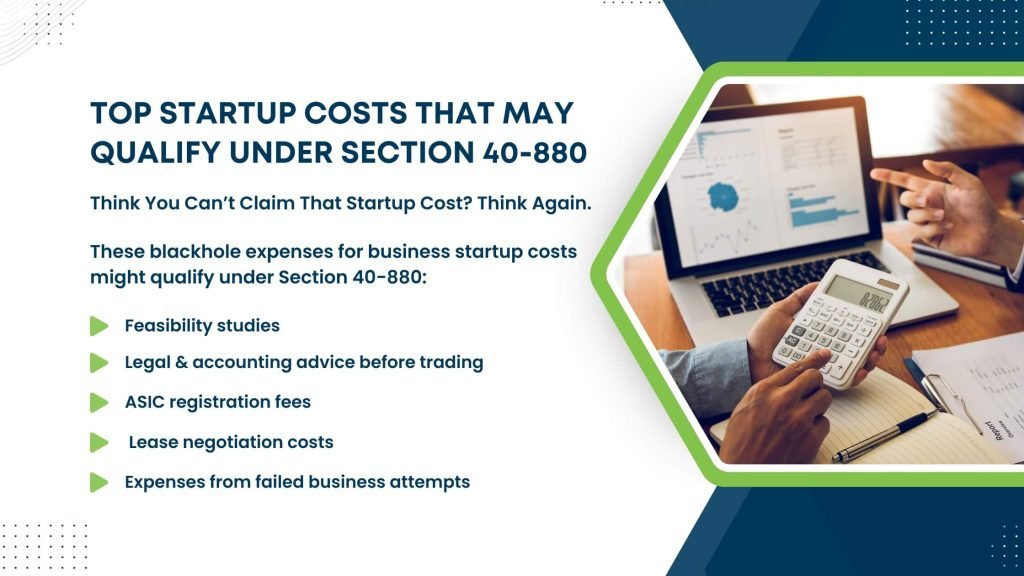
What Section 40-880 Doesn’t Cover
Not all startup or closure expenses qualify. For instance:
- Employee wages or training expenses
- Capital cost of acquiring a physical or depreciating asset
- Lease payments or utility bills
- Expenses deductible under other tax provisions
- Private or domestic expenses
These either fall under other tax rules or are explicitly excluded.
How to Claim Blackhole Expenditure in Australia
If you’re wondering how to claim blackhole expenditure, here are some practical steps:
- Identify Eligible Costs:
Go through your financial records and filter out any capital expenses not claimed elsewhere. - Check ATO Guidance:
Ensure these expenses meet the criteria under Section 40-880. - Apply Over Five Years:
Once eligible, claim 20% of the amount each year for five consecutive years. - Keep Documentation:
Maintain proof of intent to start or restructure the business, including emails, agreements, or business plans. - Consult a Tax Advisor:
This is especially important if you have mixed-use expenses or failed ventures.
Many businesses also turn to outsourced tax services for clarity on complex deduction areas like Section 40-880, especially when dealing with early-stage ventures, feasibility costs, or shutdowns.
In fact, recent commentary from Wolters Kluwer (May 2025) highlights that the ATO has increased scrutiny of Section 40-880 tax deduction claims, especially after recent court cases like Clough and Satterley Property Group, making it crucial to maintain detailed documentation.
Real-World Example
Consider a retail entrepreneur who spent $25,000 investigating the purchase of a franchise. After due diligence, they decided not to proceed. Since the cost isn’t tied to a specific asset and doesn’t fall under another deduction category, it qualifies as blackhole expenditure.
Under Section 40-880, they can claim $5,000 annually over five years. Without this provision, that money would be lost in the eyes of the tax system.
Interaction with Other Deductions
Be careful not to double-dip. For example, if you’re already claiming borrowing costs under Section 25-25, those can’t also be claimed under Section 40-880. The ATO expects taxpayers to apply the most appropriate provision. As confirmed in ATO Tax Ruling TR 2011/6, Section 40-880 is considered a “provision of last resort”, meaning it only applies when no other specific deduction provision is available. This makes understanding overlapping tax rules all the more critical.
This is where knowledge of ATO rules for project pool deductions comes in handy, especially when dealing with large projects or staggered investments.
Strategic Tax Planning Tip
If you’re preparing to launch or wind up a business, pre-plan how you allocate and document your expenses. Knowing what may be considered blackhole expenditure in advance helps in budgeting and forecasting your tax position over the next five years.
And if your project involves feasibility stages or exploratory costs with uncertain outcomes, keep a clear paper trail. The ATO will want evidence that the costs relate to a business carried on or intended to be carried on.
Engaging with outsourced services can also help structure your expense records from day one, making it easier to claim eligible deductions confidently over the five-year period.
Final Thoughts
Navigating grey areas in tax law can be tricky, but provisions like the Section 40-880 tax deduction provide relief to businesses investing in long-term success. If you’ve ever lost money trying to start, expand, or even wind down a business, it’s worth revisiting your past records. There may be blackhole expenditure waiting to be claimed.
Understanding what qualifies as blackhole expenditure ATO and how to document and claim it correctly can lead to significant tax benefits, particularly for startups, entrepreneurs, and business owners operating in uncertain markets.



